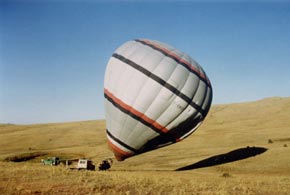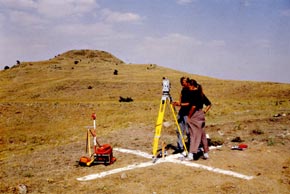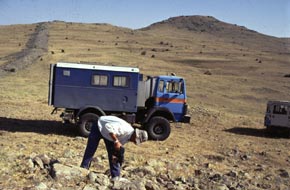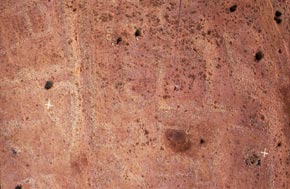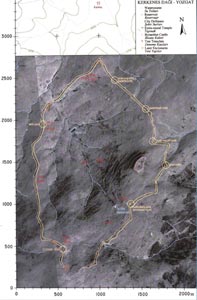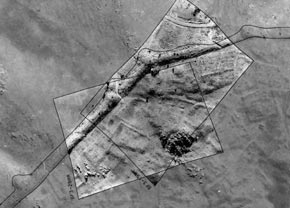| |
Kerkenes from the Air:
Study of such a large area of visible remains by traditional methods
was a daunting prospect. Our new approach focussed on the innovative
application and integration of remote sensing methods, balloon and blimp
photography, geophysical survey methods, GPS and topographic survey,
over a very large area. In this research design the role of excavation
was to test and compliment the survey results.
As the project
progressed we found ourselves pioneering new grounds. Technological
advances and the availability of more sophisticated equipment, including
computing power, brought along new possibilities. We were slowly being
driven into a technological world which was to become ours. A world
full of difficulties and frustration!
|
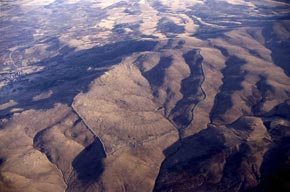 |
|



